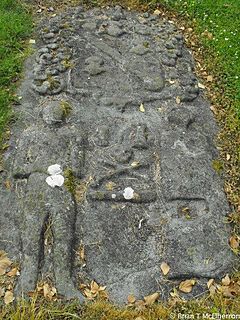Related Research Articles

Robert Hallam was an English churchman, Bishop of Salisbury and English representative at the Council of Constance. He was Chancellor of the University of Oxford from 1403 to 1405.

Richard Poore or Poor was a medieval English bishop best known for his role in the establishment of Salisbury Cathedral and the City of Salisbury, moved from the nearby fortress of Old Sarum. He served as Bishop of Chichester, Bishop of Salisbury and Bishop of Durham.
Philip de Harcourt was a medieval Lord Chancellor of England and Bishop of Bayeux. He was unsuccessfully elected as the Bishop of Salisbury.
Henry Bowet was both Bishop of Bath and Wells and Archbishop of York.
Robert Neville was an English prelate who served as Bishop of Salisbury and Bishop of Durham. He was also a provost of Beverley. He was born at Raby Castle. His father was Ralph Neville and his mother was Joan Beaufort, daughter of John of Gaunt. He was thus a highly placed member of the English aristocracy.

Richard Mitford was an English bishop of Chichester from 17 November 1389, consecrated on 10 April 1390, and then bishop of Salisbury. He was translated to the see of Salisbury on 25 October 1395.
Nicholas Bubwith (1355-1424) was a Bishop of London, Bishop of Salisbury and Bishop of Bath and Wells as well as Lord Privy Seal and Lord High Treasurer of England.
Simon Sydenham was a medieval Dean of Salisbury and Bishop of Chichester.

Edmund Lacey was a medieval Bishop of Hereford and Bishop of Exeter in England.
Robert Mascall was a medieval Carmelite friar who served as the Bishop of Hereford from 1404 to 1416.
Henry of Lexington was a medieval Bishop of Lincoln.
Robert Braybrooke was a medieval Dean of Salisbury and Bishop of London.
John of Oxford was a medieval Bishop of Norwich.
Gilbert Glanvill or Gilbert de Glanville was a medieval Bishop of Rochester.

Giles of Bridport was a medieval Bishop of Salisbury.
Walter Scammel was a medieval Bishop of Salisbury.
Henry Brandeston was a medieval Bishop of Salisbury.

Roger Martival was a medieval Bishop of Salisbury in England.

Robert Wyvil was a medieval Bishop of Salisbury.

The Archdeacon of Kells, alias the Archdeacon of Nobber, was a medieval ecclesiastical post in the Diocese of Meath in the Kingdom of Meath, Ireland. The Archdeaconry was officially established sometime between the 11th and 13th centuries, and was annexed to the Rectory of Nobber. In the 16th Century, the office was briefly united to the Bishopric of Meath, but afterwards separated again. As a consequence of the Reformation, the Archbishop of Armagh held the "Archdeacony of Kells, in commendam 1569 to 1584". Sometime before 1622, the Archdeacon of Kells and Rectory of Nobber were permanently united to the bishopric of Meath.
References
- Timmins, T.C.B., ed. (1984). "The Register of John Chandler - Dean of Salisbury 1404-17" (PDF). Wiltshire Record Society. Devizes: Alan Sutton. 39. Retrieved 13 April 2016.
- Fryde, E. B.; Greenway, D. E.; Porter, S.; Roy, I. (1996). Handbook of British Chronology (Third revised ed.). Cambridge: Cambridge University Press. ISBN 0-521-56350-X.
- Plumtree, J. (2018). "Sex, Lies, and Visitations: Secrets and Discovery in the Registers of John Waltham and John Chandler". In Meirinhos, J. (ed.). Secrets and Discovery in the Middle Ages. Brepols. pp. 247–257. ISBN 978-2-503-57745-6.